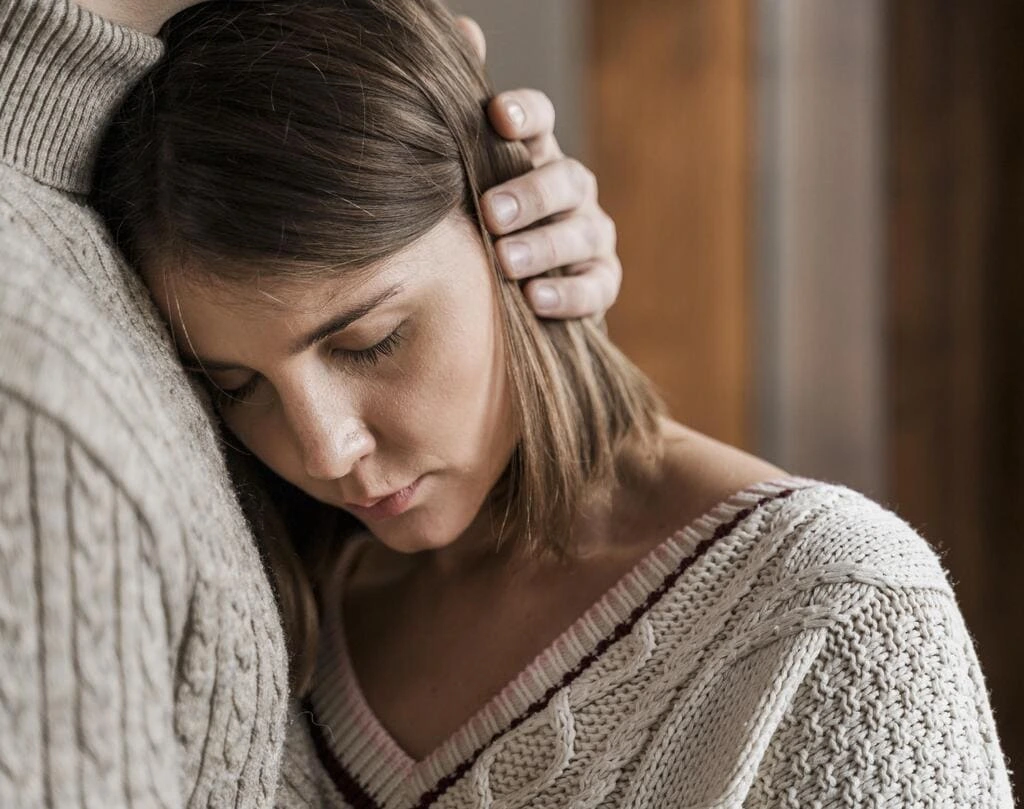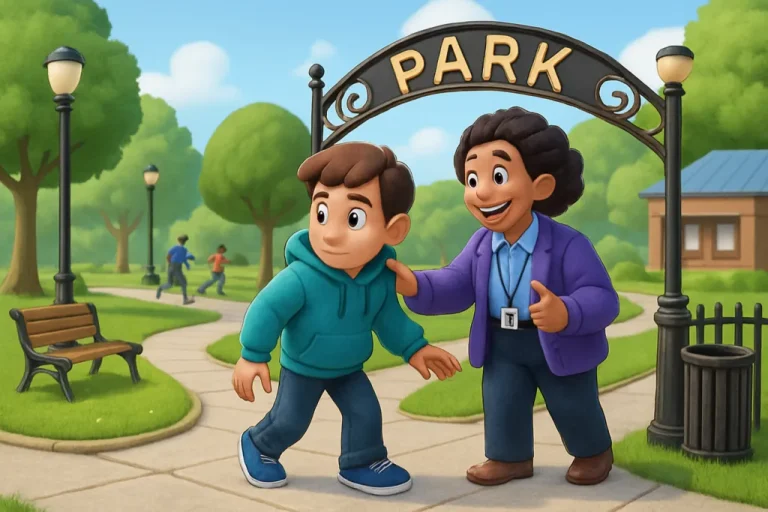Defining Self-Harm in Autism
Self-harm is when a person injures themselves on purpose, and in most cases, self-harm in autism spectrum disorder serves as a means of communication. Frequently, children are trying to convey a message, feeling or desire they might not be able to express in words.
Self-injury can take many forms, including:
- Slapping
- Headbanging
- Biting
- Scratching
- Pinching
Many autistic adults and children engage in self-harming behaviours to get their urgent needs met, such as expressing pain, fear, discontent, or anxiety. For example, your child may be trying to say, ‘This is overwhelming, I don’t feel comfortable doing this’, or ‘Come, play with me’, or ‘My head hurts, I feel better when I bang it,’ and similar.
Self-harm can also be a sign of sensory stimulation. For example, children or adults with autism may self-harm as a way to decrease or increase the level of stimulation by different internal or external factors.
In autism spectrum disorders, self-harm can become a learned behaviour. Many parents and caregivers may unintentionally reinforce the behaviour by responding naturally to the child’s reactions. For example, if a child exhibits a self-injury and the parent or caregiver hands them the desired toy, the child learns that self-injury helps them obtain the favourite toy.
Parents, caregivers or teachers of a person with autism who are prone to self-harm can try to identify and eliminate the triggers that cause the behaviour.
Warning Signs and Red Flags
It’s important to note that not all individuals with autism will have the same signs and triggers of self-injury. If you are concerned about your child’s behaviour, it’s advisable to seek guidance from a qualified healthcare professional.
Here are some potential early warning signs to have in mind:
- Sudden changes in behaviour
- Increased irritability
- Increase in frequency of repetitive behaviours
- Social withdrawal
- Changes in sleep patterns
- Increase in self-stimulatory behaviours
- Physical indicators
- Verbal expressions of distress
- Changes in routine
- Sensory overload
Early assessment and intervention can make a life-changing difference for people on the autism spectrum and their families. Parents and caregivers will receive guidance on prevention and coping strategies for dealing with self-harm behaviours. Humanised care and emotional support can empower people with autism spectrum disorder to live a fulfilled life and reach their full potential.
Identifying Triggers and Underlying Causes
In many cases, ordinary daily life activities can be more challenging for people with autism spectrum disorder. For example, your loved one might experience differences in grasping social situations and relationships. Also, specific environments can cause sensory over-stimulation, which may result in self-harm behaviour. Social isolation, rejection or loneliness can also be a cause of self-injurious behaviour.
Potential triggers and causes for self-harm behaviours in people with autism spectrum disorder include:
- Sensory overload – trying to cope with sensitivity to sound, light, touch or texture
- Challenges in recognising and regulating emotions (alexithymia)
- Having unmet urgent needs
- Difficulties with transition such as changing home, school, work
- Co-occurring mental health conditions or developmental disorders
In addition, the most common causes of self-harm for both neurodivergent and neurotypical people include:
- Mental health challenges such as anxiety or depression
- Coping with stress and worry
- Traumatic experiences
- A lack of control
- Being around people who self-harm
Although self-harm is regarded as a coping mechanism, it imposes a serious risk to a person’s physical and emotional well-being. Identifying triggers can reduce the risk factors for self-harm and help the individual live a safe and rewarding life at home and in the community.
Strategies to Approach Autistic Self-Harm
Parents and caregivers may benefit from education on the underlying causes of self-harm by seeking guidance from experienced professionals in autism and mental health. Therefore, managing self-harm requires compassionate and comprehensive strategies, such as:
- Identifying triggers and developing effective communication strategies
- Using sensory regulation techniques
- Using positive reinforcement for healthy coping mechanisms
- Creating safe environment
- Providing emotional support and validating feelings
It’s important to note that each individual with autism is unique, and what works for one person may not work for another. Being patient, adaptable and open to adapting strategies based on your loved one’s needs and desires is crucial in each situation.
Effective Communication
Using effective communication as a strategy is essential to providing support and understanding to people who exhibit self-harm behaviours. You can achieve this by creating a supportive environment where your loved one feels accepted and understood. This can help in building trust and strong relationships between you and your child.
Also, parents can foster effective communication by using clear and simple language and avoiding figurative language and vague expressions.
Paying close attention to verbal and nonverbal cues is the key to effective communication. Parents and caregivers can try to listen actively to the child’s concerns, emotions, and needs. This will help them identify and prevent the trigger that might lead to an emotional meltdown and eventually to self-harm behaviour.
Sensory Regulation
Sensory regulation is also important in preventing self-harm in autistic adults and children. Creating a comfortable and calm environment that takes sensory preferences into account can significantly help. This involves adjusting lighting, noise levels, and the overall sensory stimuli in the surrounding environment. Dimming lights, using noise-cancelling headphones, and providing sensory-friendly spaces can promote pleasant and positive feelings in the individual, creating a nurturing and thriving environment.
Based on The Child Adolescent Health Measurement Initiative, positive childhood experiences decrease the chances of adult depression, challenging behaviour and the risk of self-harm. However, this does not mean a child will not experience challenges.
Developing Emotional Regulation Techniques
Before being able to self-regulate emotions, the child first needs to learn how to recognise and understand their emotions. For example, they need to understand what makes them happy or sad.
This is the first step towards building emotional self-awareness, helping to understand how to cope with over-stimulation or under-stimulation in the environment. If you have doubts about how to teach your loved one to identify and understand emotions, consult your care team, your child’s teacher or therapist for guidance.
Importance of Early Detection
Early detection of self-harm behaviour is of paramount importance for the safety and quality of life of children, young adults and adults with autism. Although self-inflicted physical injury is common for people with borderline personality disorder and mental health challenges, a survey performed in clinical and nonclinical settings shows an increased risk of self-harm behaviour in children and adults with autism spectrum disorder.
Early detection and intervention can help to:
- Ensure safety and well-being
- Identify underlying causes for self-harm
- Cope with communication challenges
- Identify emotional or sensory challenges
- Prevent escalation
- Improve the quality of life
- Create and design tailored care and support plans
It’s important to note that each individual with autism is unique, and self-harm behaviours may have different underlying causes and triggers. Early detection should be a collaborative effort involving parents, caregivers, educators, and professionals experienced in both autism and mental health.
An interdisciplinary approach ensures a holistic understanding of the individual’s needs and the development of personalised care approaches.
The Impact of Self-Harm on Autistic Individuals
For many people, self-harm is a coping mechanism for difficulties expressing emotions, sensory overload, or overwhelming sensory experiences. Sometimes, self-harming behaviours can provide a sense of control or relief in a world that often feels chaotic or unpredictable.
Physically, self-harm can lead to serious injuries or infections. Emotionally, it can exacerbate feelings of isolation, frustration, and shame. Communication barriers can make it challenging for autistic individuals to seek help or articulate their feelings, leading to delayed intervention.
Addressing self-harm in autistic individuals requires a holistic and comprehensive approach. This involves tailored therapeutic strategies that consider sensory sensitivities, communication styles, and personalised coping mechanisms. Building emotional regulation skills, enhancing communication, and fostering a supportive environment are crucial steps in reducing the risk of self-harm in people with autism.

Developing Personalised Care Plans
Implementing person-centred practices in caring for and supporting people with autism can have a life-changing impact on the person and their family. Developing personalised care plans means placing the individual and their human rights at the heart of the care.
Being person-centred signifies accepting and embracing the differences that make each person unique and putting each individual’s needs at the centre of care. People-focused care entails dignity, respect and compassion in every step of the health and social support.
When a person feels respected and valued, they feel empowered to believe in themselves and in their strengths, willing to follow their aspirations and reach their full potential.
At Unique Community Services, we ensure people’s unique needs and desires are met and fulfilled. Placing the individual in the centre of the decision-making process fosters their independence, self-reliance and desire for a positive change.
Autism Care and Support with Unique Community Services
At Unique Community Services, we provide tailored care and person-centred support for people on the autism spectrum and with complex care needs.
Our expert clinicians are dedicated to creating a safe and nurturing environment that empowers people to reach their goals and prioritise the unique interests and preferences of the people we serve. Support plans are designed around a person’s unique strengths, enabling people to be as independent as possible and improving their quality of life.
Contact us to discover how our CQC-regulated, personalised care services can assist you and your loved one. Our offices in Manchester and Leeds are ready to help you and your loved ones.




